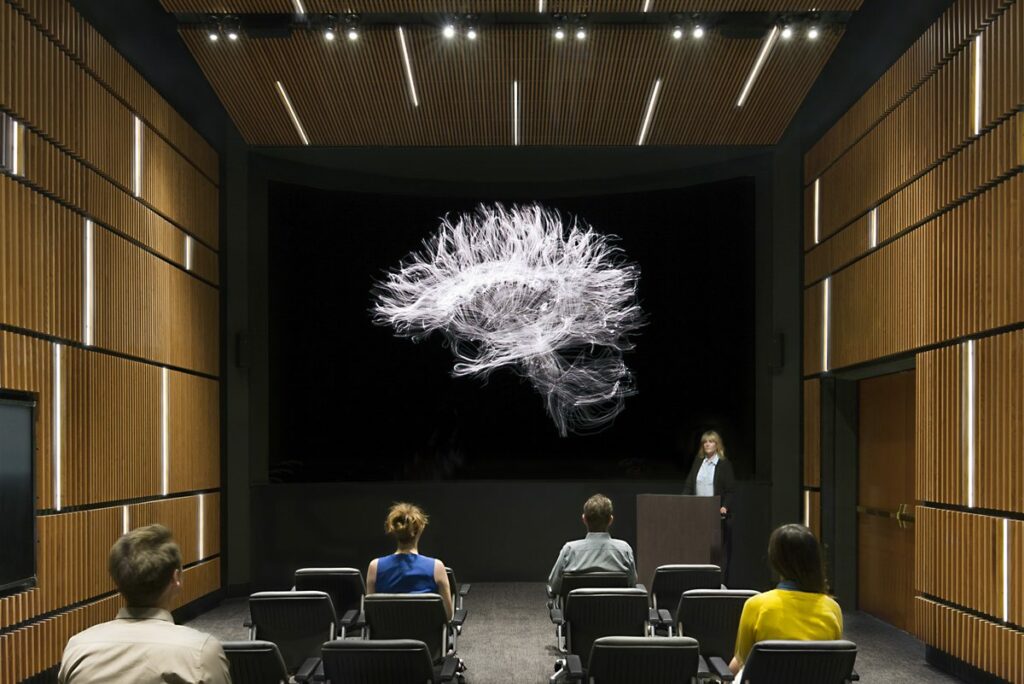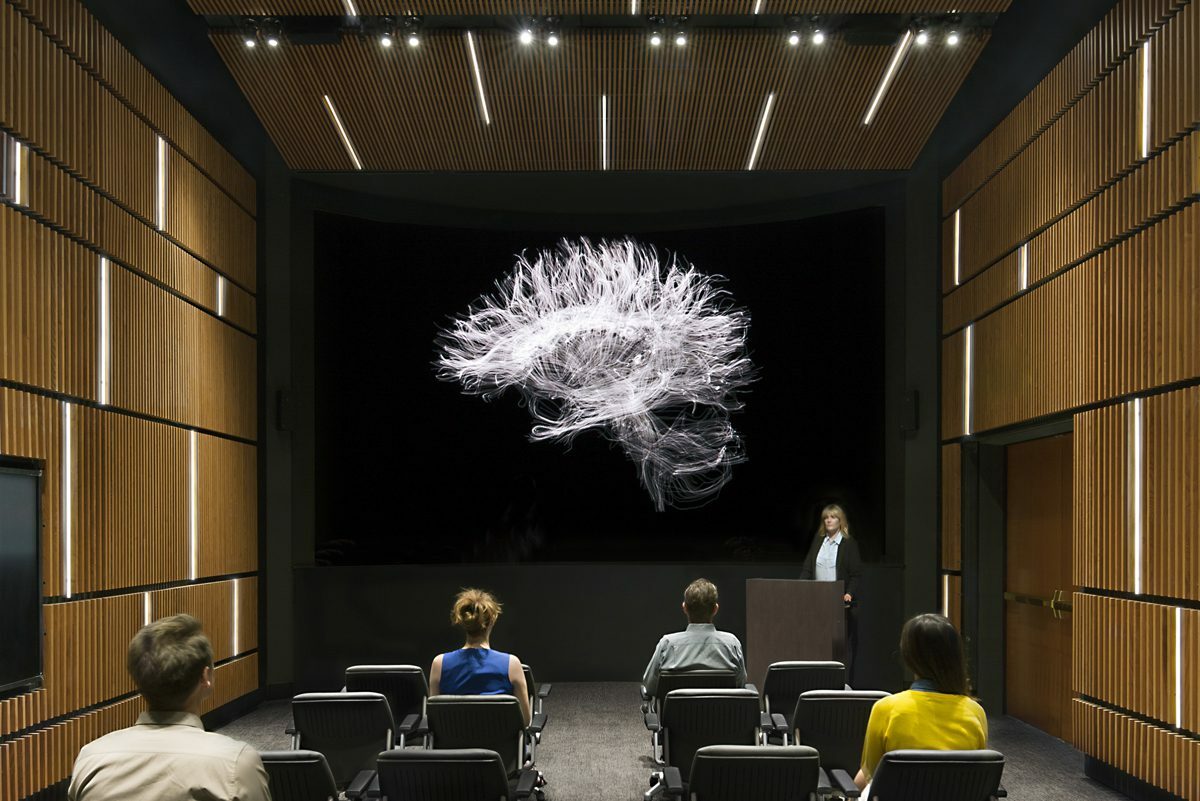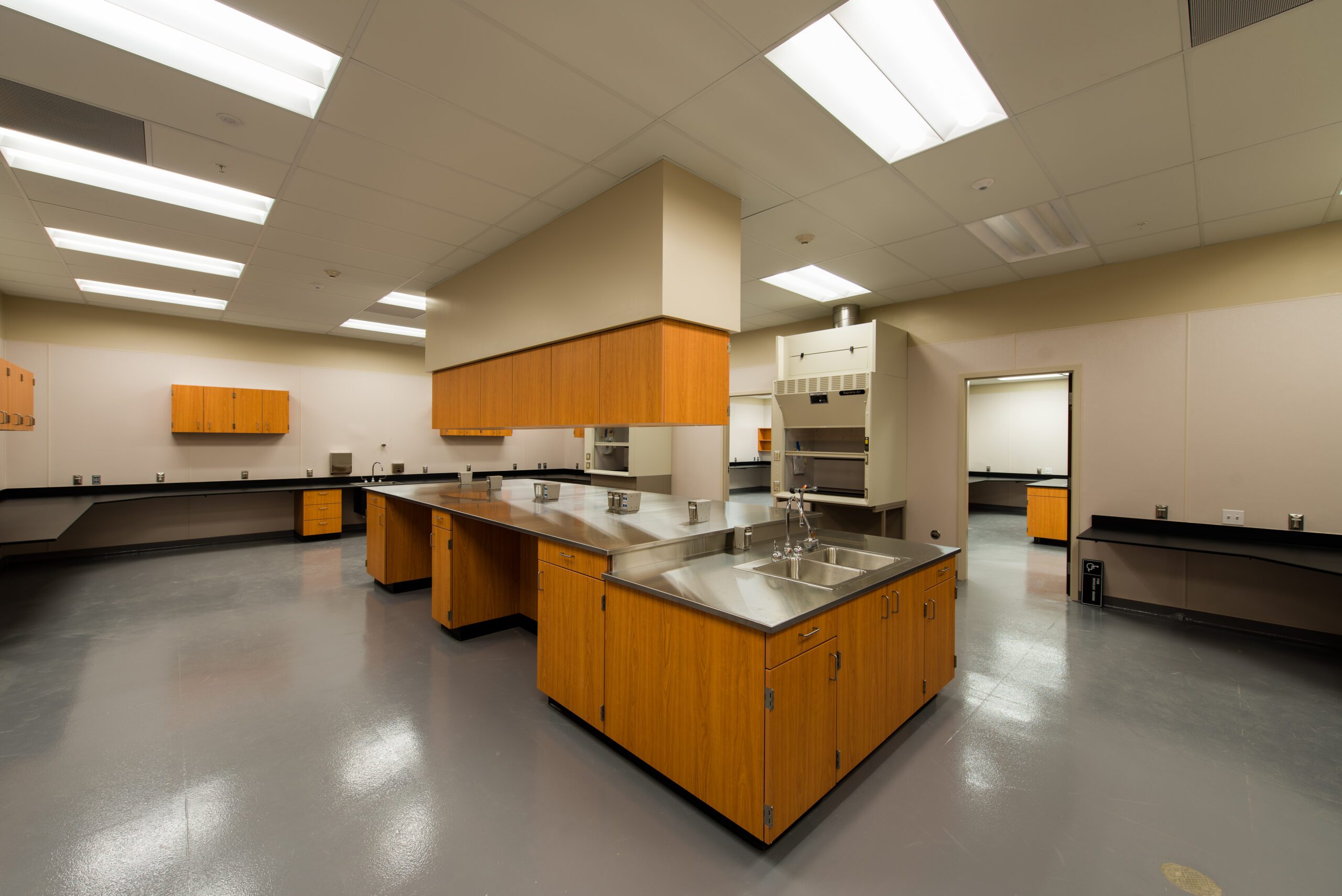
October 9, 2023
Outlook on the L.A. Region’s Life Science Real Estate Market: A General Contractor’s Perspective

University of Southern California’s Mark and Mary Stevens Neuroimaging and Informatics Institute. Photo courtesy of MATT Construction
MATT Construction provides a unique perspective on the current life science real estate market and considerations for successful project foundations
By Matt Construction
In recent years, the commercial real estate market has faced several challenges ranging from the COVID-19 pandemic and its effects on all facets of life, economic uncertainties, rising interest rates, and much more. However, despite the generally negative outlook for the commercial real estate market, the life science real estate segment in Los Angeles and Orange County has emerged as a steady and evolving market. Well-prepared life science firms in the Los Angeles region and surrounding areas are presented with a favorable and unique opportunity to pursue new ventures right now. From the perspective of a general contractor versed in this space, MATT Construction provides insight into considerations for setting up your life science project for success.
Market Viability
Having experienced an unprecedented surge in recent years, the growth of the life science market has created a demand for real estate that caters to the needs of life science firms allowing them to push the boundary of what’s possible in research and development.
As seen in Biocom California’s 2023 Life Science Economic Impact Report, life science industry employment in Los Angeles and Orange County are up 4 percent year-over-year. Not to mention, NIH grant funding for life science work in California increased by 8.5 percent in 2022. With this continued growth comes ongoing demand for state-of-the-art real estate that caters to the specific needs of life science firms.
Also noteworthy is the fact that work from home doesn’t translate well into life science work. Moreover, these scientists require not only technical spaces that can support their work, but also creative office space that allows them to execute their best work.
This opportunity is especially interesting for life science firms that are seeking smaller to mid-sized spaces. In recent news, two of the nation’s largest developers had trouble leasing 300,000-400,000-square-foot campuses within the region, as a result, they’ve begun negotiating lease deals as small as 2,000 square feet in those complexes.
Recently, a life science principal from the L.A. office of a national architectural firm noted that many of the deals their firm has seen are within the 5,000-50,000 square foot range. In addition, they are seeing active interest in adaptive reuse spaces.
Considerations for Success
From a design, construction and development standpoint, there are a variety of considerations to recognize when building solid foundations for a successful life science facility.
It’s important to get ahead of the project and address “requirements” that aren’t part of the buildout contemplated. For example, in a recent MATT proposal process for the renovation of a private laboratory space, the project was terminated because the facility infrastructure necessary to support the laboratory renovation did not exist. The client consequently had to conduct a master planning effort instead of proceeding with their original laboratory space remodel.
In another experience, the selection of a design and construction team was postponed due to a lack of due diligence in design and entitlement. Initial questions from the client focused on construction costs and schedule durations. However, when conversations around the status of geotechnical studies, entitlement to easements and project power requirements ensued, the need to adjust the client’s expectations became clear and the initial stated timeline was pushed by six to twelve months.
A Balanced Approach: Establish Your Foundations
Successful life science projects require a balanced approach that focus on establishing solid foundations that carry the project from planning to completion.
From the onset of a new venture, core science competencies must be solid. Program block planning should be complete prior to exploring available commercial real estate options. With many real estate options in the current marketplace, bringing in professional assistance to support your firm in identifying and navigating the acquisition of your space can be highly valuable enabling you to focus on your firm’s core competencies.
For those needing to obtain financing, considering sources outside of traditional regional banks could be worthwhile. For example, grants, tapping relationships with venture capital firms in the life science space, or exploring sale-leaseback financing options (if it applies to your situation) could be advantageous.
At the beginning of the project, high level budgets and schedules may help establish ballpark parameters for your situation; but further planning with your general contractor will ensure the project stays on track.
Regardless of the type of construction (whether new or adaptive reuse), it’s important to verify zoning, change of occupancy, fire ratings, and other land use options or restrictions that could be involved with the property/space. Also, it’s important to understand that not every distressed office property has potential for life science conversion. If proceeding with adaptive reuse, evaluate the structure against generally accepted design requirements such as fire rating, power availability, slab capacity and floor-to-ceiling height requirements.
Finally, the involvement of a general contractor familiar with this type of work early in the process can provide feedback well beyond budget and schedule. Guidance on the most efficient structural configurations, façade design, mechanical and electrical systems, as well as advice on constructability and project logistics, all have a bearing on budget and schedule. In MATT’s experience, these services provide net savings to the overall project design and construction process.
Looking ahead, the life science real estate market in the Greater Los Angeles region and Orange County is expected to continue its positive trajectory. With proper planning and support, this marketplace offers viable opportunities for investing in life science real estate.

A laboratory at the USDA Animal & Plant Health Inspection Service (APHIS) site in Los Angeles. Photo courtesy of MATT Construction